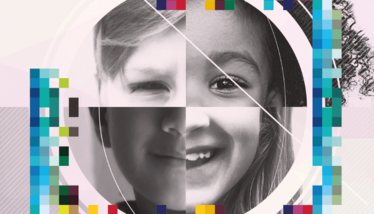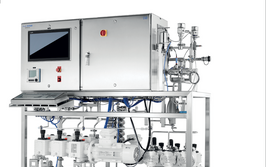Natural Concern
Giving children living with neglected diseases a fairer chance at life

This article is part of our special focus on "traditional" pharma: The Small Molecule Manufacturer (read more here). You can find more articles from The Small Manufacturer here.

Maria Luisa Rodriguez, Global Program Head for the development of nifurtimox at Bayer.
Chagas disease – described by the WHO as “silent and silenced” – is a public health concern for developing countries in Latin America where it is endemic. It is caused by the protozoan parasite, Trypanosoma cruzi, which is carried and spread by insects. Although the symptoms of the disease vary, it is responsible for approximately 14,000 deaths each year (1) and, given that the majority of people affected by the disease are children, appropriate treatments are needed. The Medicine Maker spoke to Bayer’s Maria Luisa Rodriguez, Global Program Head for the development of nifurtimox, about the challenges posed by treating children affected by Chagas disease – and how the industry could more effectively address the needs of pediatric patients with neglected diseases.
Why is pediatric drug development so important?
At the core of the pharmaceutical industry’s motivations is giving people a fair chance at life. This should begin by ensuring that children are able to lead healthy lives with necessary treatments available to help see them through periods of illness. As a parent and a person who works in the pharmaceutical industry, it is important for me and those who I work with to find solutions to the medical problems faced by children, regardless of whether they have chronic illnesses or acute conditions.

How does Chagas disease affect children?
Though typically asymptomatic, Chagas disease is a life-threatening disease that can cause severe organ manifestations like cardiomyopathy and gastrointestinal dysfunction years after infection. The parasitic infection relies on different routes to reach the host, but is generally caused by contact with the infected feces of blood-feeding triatomine insects. Vertical transmission, from mother to fetus, is another important, route of infection. Children born to infected mothers have a 5 percent chance of acquiring the parasite.
As a demographic, children are most affected by Chagas disease, which makes it important to focus treatment efforts on them to prevent associated complications following them into their later lives. Though the disease can stay latent for decades, between 10 and 30 percent of people will experience some of the more serious symptoms of the disease. By treating younger patients and addressing the issue as early as possible, the risk of developing severe disease symptoms is reduced.
How can dosage forms affect the treatment of Chagas disease?
The crux of the issue when it comes to treating Chagas disease is the availability of appropriate formulations for children. Big, bitter-tasting pills are aversive to us as adults, so why would we expect children to want to take them? Furthermore, accurate weight-adjusted dosing is important. Though effective drugs like nifurtimox have been available for almost 50 years and can be used to kill the parasite Trypanosoma cruzi which causes the disease, the dosage form that the drug is available in can make all the difference in how well it is tolerated by children. In the years since nifurtimox was first introduced to the commercial market, the tablets have been cut in pieces, crushed up and added to food or milk to treat children, resulting in poorly controlled dosing. The problem is only exacerbated by the fact that the drug has to be taken three times a day over a period of 60 days.
Bayer recently submitted an application for nifurtimox to treat pediatric patients with Chagas disease to the FDA. The drug was reformulated to easily dissolve in water, making it easier to administer to children who are unable to swallow whole tablets. The tablets, that are provided now in two dose strengths, can also be broken to divide the dose so that appropriate weight-adjusted amounts of medication can be given to patients of all ages.
What other challenges are associated with treating Chagas disease?
Though there are an increasing number of cases of Chagas disease in Europe and the US, the majority of people living with the condition are found in Latin America. Because Chagas disease is caused by an insect, cultural stigmas linked to poverty and uncleanliness can hold patients back from seeking diagnosis and receiving the treatment they need as they don’t want their communities to be aware that they have the disease. But with that being said, in most of these countries, young children are the primary focus of treatment initiatives and there are a growing number of screening programs to test pregnant mothers. The industry now needs to create appropriate support channels for adolescents and adults, which should result in a more comprehensive approach to control and finally eradicate the disease.
What advice can you offer (smaller) companies wanting to develop pediatric formulations for neglected diseases?
It is important to keep in mind that the key requirements for pediatric formulations in developing countries differ from those in developed countries. Though general considerations must be made regardless of patient geography, like the use of childproof packaging and appropriate dosage forms, there are also logistical and storage considerations to take into account when transporting medicines to economically emerging countries. If a medicine is prone to spoiling at high temperatures, then there is little use in sending it to a location that lacks appropriate refrigeration facilities. Simply put, having a patient-centric mindset and understanding that the needs of children around the world differ based on lifestyle will help in the development of drugs best suited to the demographic.
- DNDi, “What is Chagas Disease?” (2019). Available at: https://bit.ly/2y0xzMU
After finishing my degree, I envisioned a career in science communications. However, life took an unexpected turn and I ended up teaching abroad. Though the experience was amazing and I learned a great deal from it, I jumped at the opportunity to work for Texere. I'm excited to see where this new journey takes me!


















